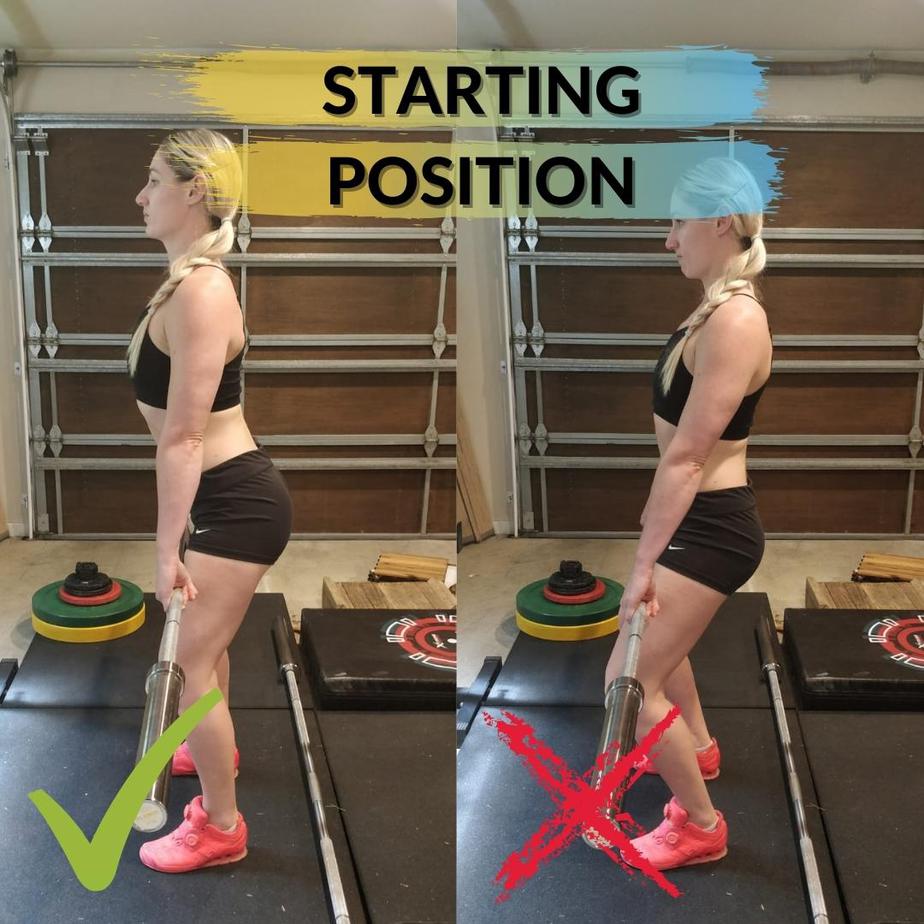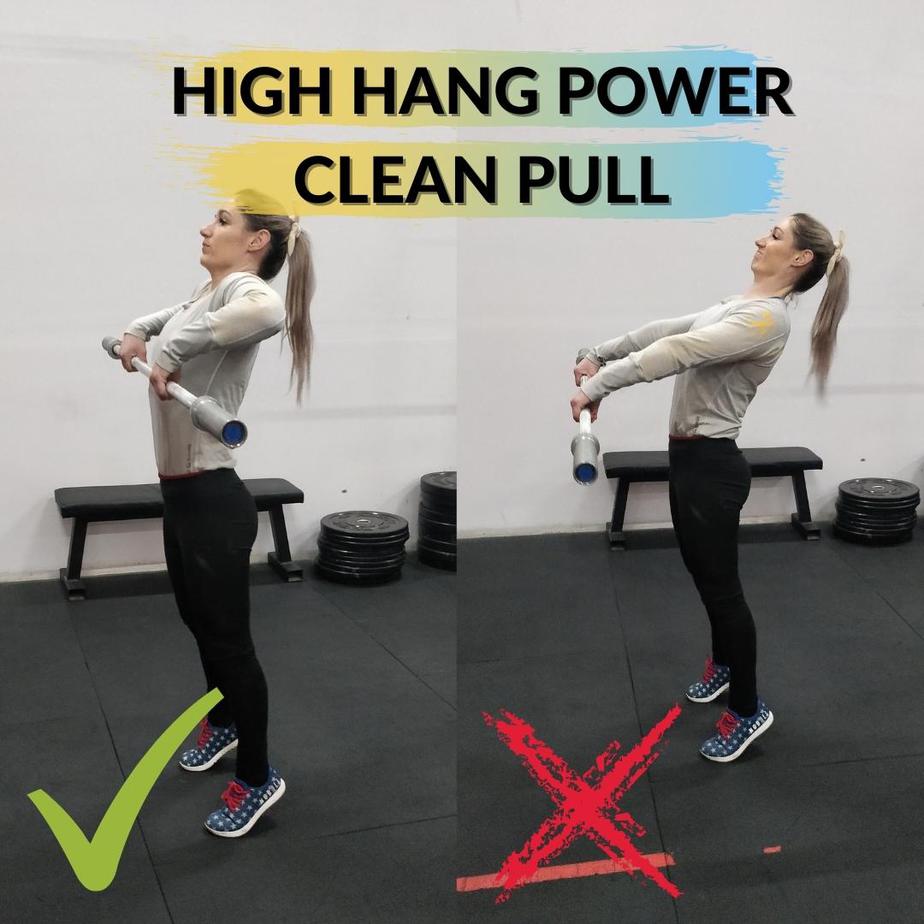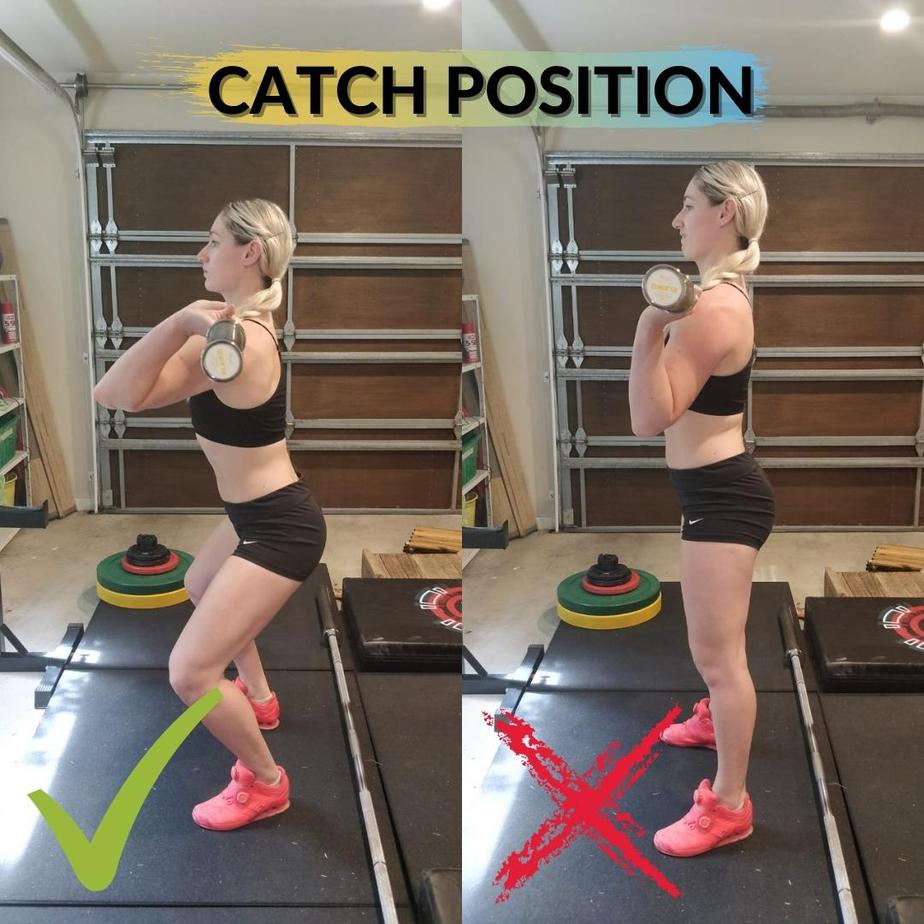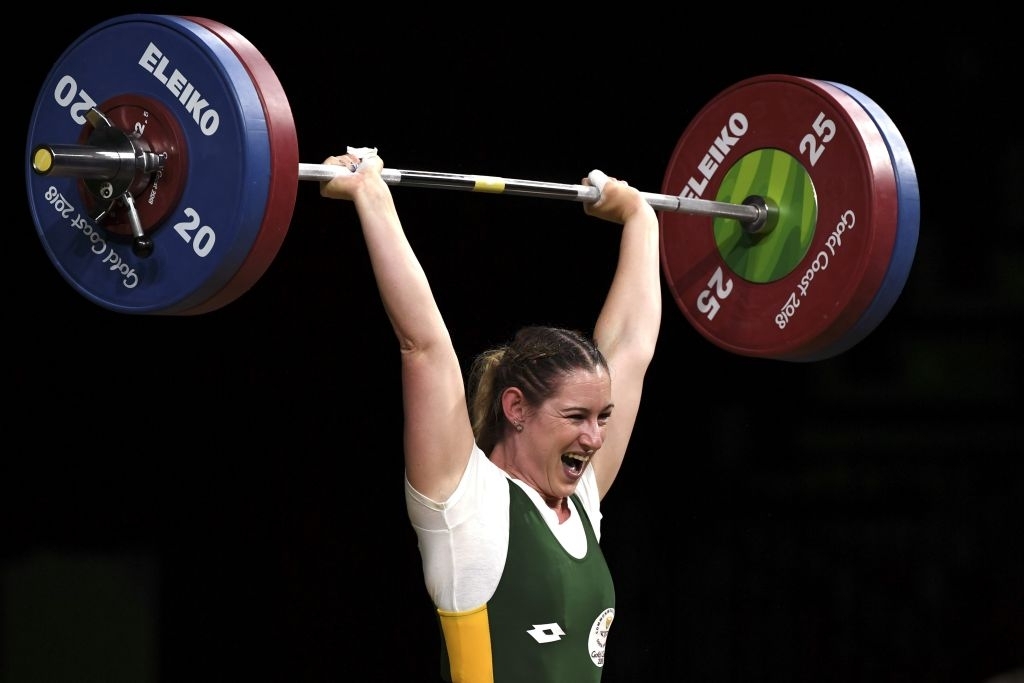The high hang power clean, or power clean from hip, and not to be confused with the hang power clean, is a clean variation that is quite common in Weightlifting programs especially in the Western world. However, it is a commonly butchered exercise as athletes go too heavy causing them to dip too low defeating the purpose of the exercise.
So why would you perform the high hang power clean in training when the movement is so short forcing you to use such light weight?
Table of Contents
The Different Hang Positions
The high hang power clean is a less common power clean variation. This is different from a tall variation where you would start with straight legs and pull yourself under the bar with only a shrug and extension of the ankle.
Here are the five different hang variations.
- High-Hang or Hip
- Mid-Thigh
- Hang or Top of Knee
- Knee
- Hang Below Knee
How To Perform The High Hang Power Clean
The Starting Position
It takes one small movement to be in the correct position to start the high hang power clean. And that is dipping the hips slightly down so the knees are slightly bent and slightly facing out. This is known as the power position.
A big mistake some Weightlifters make is driving the knees forward under the bar when finding the start position. This creates a position where you can’t generate any speed or power.
To counterbalance this position, all your weight is behind the bar making it impossible to explode vertically.
The elbows should be pointing out with a big chest. The torso should remain vertical. Avoid bending over at the hips or pushing the hips back. This movement should be completely vertical avoiding any horizontal movement of the barbell.
Your bodyweight should be centered through the middle of your foot. Having your body weight on your heels will cause you to lean back which will force the bar out in front when pulling. Having your body weight too far forward towards your toes will cause you to not being able to complete your pull due to not being able to find full extension vertically.
You will have to dive under the bar to catch it in this instance.

The Pull
The arms remained relaxed as the pull is initiated by the push from the legs. This push from the legs should be similar to the movement performed when jumping.
As full extension of the hips, knees, and ankles is reached, a big shrug from the shoulders while pulling the bar vertically as close to the body as possible will take place.

The Catch
As you pull yourself under the barbell, the elbows must turn over quickly to find a position in front of the barbell pointing as high as possible. The bar should be resting on your shoulders with your knees slightly bent in the receiving position.
If you have the wrist flexibility to maintain your hook grip in the rack position, you can keep the same grip throughout the whole movement. If you lack flexibility in the rack position, you will let go of your hook grip during the turnover so you can catch the bar with high elbows with the barbell sitting on your fingers and shoulders.
A common mistake with the catch during the high hang power clean is the jump. Instead of jumping up and getting full extension, athletes kick their feet back. This is known as donkey kicking where Weightlifters will jump as high as possible kicking the feet back trying to emphasize the stomping of the foot.
This results in an incomplete pull as the full extension is missed for the sole purpose of finding a good foot stomp.

There are two important points to remember when performing the high hang power clean:
Why Use The High Hang Power Clean?
Emphasizes Speed and Power
It takes a tremendous amount of speed and force to extend with a heavy load and to catch it in a power position from such a small movement. If you are a slower athlete, this exercise will develop the necessary speed and power to complete and pull yourself under the bar for the clean.
Teaches How To Complete The Pull
If you don’t fully extend and finish the pull, you will either miss the lift altogether or you will have to dive forward to catch it. This provides immediate feedback on what you are doing wrong in your 3rd pull.
The 3rd pull is the movement of the barbell from the hips to the shoulders in the catch. If you are diving forward in the catch, you know your body weight was either too far forward in your start position or you didn’t fully extend in your pull… or both.
If the bar is looping out in front, you know this is likely caused by extending backward instead of vertically or starting with your weight in your heels causing you to bump the bar forward.
Teaches A Fast Turnover
Without a fast turnover of the elbows, you will struggle to lift any appreciable load in the high hang power clean. This exercise requires high levels of speed.
The same goes for the classical clean. If you struggle with a fast turnover of the elbows, you will struggle when the load gets heavier. By using the high hang power clean, you can train the speed of the elbow turnover to transfer to your clean.
An Assistance Exercise For Your Clean
When you perform a power clean or clean, you have many moving parts so it can be difficult to make subtle changes to your technique to fix certain problems. However, by breaking the movement down into its parts, you can drill a certain part of the clean that needs addressing.
If you struggle to finish your pull or have a slow elbow turnover, then using the high hang power clean as an assistance exercise to the clean will be a great addition to your Weightlifting program.
High Hang Power Clean vs Hang Power Clean: What’s The Difference?
The only difference between the high hang power clean and hang power clean is the start position. The high hang power clean starts with the barbell at the hip with the knees slightly bent and the torso vertical while the hang power clean starts with the barbell above the knee with the knees and hips bent and the torso over the bar.
When To Use The High Hang Power Clean
This movement serves as a basic exercise to teach the power clean to beginner Weightlifters. It reinforces the correct bar path from the power position and the correct catch position without all of the other moving parts.
It also makes a great assistance exercise for the clean that can be used as part of your warm-up before your primary clean exercise.
The high hang power clean can also be used as a primary exercise for certain sessions when the athlete struggles with technical faults in the clean or lacks speed in general.
Further, high hang power cleans makes a great exercise to be used in various clean complexes where you may lift from 2-3 different hang positions to reinforce positions and technique under a little fatigue and to provide variation.
How Many Sets and Reps Of The High Hang Power Clean?
4-6 sets of 2-3 reps at 65-75% of your clean and jerk 1RM to train speed and power. If you are a beginner, you likely won’t work off of these percentages. Rather, you will need to go by feel and use a load that doesn’t negatively affect your technique and positions.
High Hang Power Clean Variations
There are fewer variations you will use for this particular exercise because of how specific and limited this movement is compared to a hang variation that has more moving parts.
Pause Or No Pause
I prefer having my athletes pause at the starting position to reinforce the correct positions and remove any momentum out of the lift. This makes the exercise harder and takes away the stretch-shortening cycle (SSC).
Briefly, this reduces the use of elastic energy which will make the lift feel harder as you need to produce all of the force from a dead stop from the working muscles rather than relying on the rebound.
The rebound or no pause variation can be used to increase the speed and loading of the lift but you need to be a little more advanced to do this well without sacrificing technique.

 (@powerfulpretorius)
(@powerfulpretorius)